INTRODUCTION
3D radar is a Radar which provides a three dimensional view of Range, Altitude and Direction. The information provided by 3D radar has long been required, particularly for air defence and interception. Before 3D radars, this was achieved with separate search radars (giving range and azimuth) and a third separate radar for height finding that could determine altitude.
A fully solidstate 3D primary radar incorporates the latest technologies for Air and Weather surveillance. It provides accurate aircraft position information, including flight height. These capabilities of detection and 3D position estimation are achieved even under extreme weather conditions, ground clutter and natural or man-made interference.
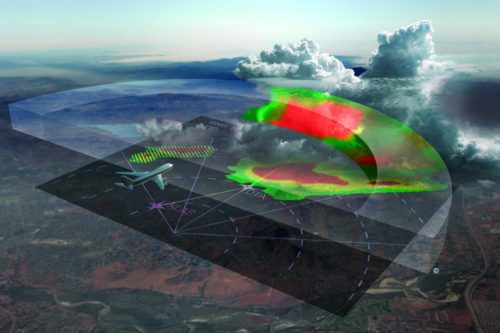 3D Weather Radar System – A 3D Weather Radars uses a very narrow pencil beam. After each scanning rotation, the antenna elevation is changed for the next sounding. This scenario will be repeated on many angles to scan all the volume of air around the radar within the maximum range. For a complete cycle with rotation and tilt of the antenna in all directions but it takes up to 15 minutes. This time approach is not suitable for an air surveillance radar because very fast aircraft can travel a huge distance in a very short time. An airplane with supersonic velocity travels nearly 300 km during this interval!
3D Weather Radar System – A 3D Weather Radars uses a very narrow pencil beam. After each scanning rotation, the antenna elevation is changed for the next sounding. This scenario will be repeated on many angles to scan all the volume of air around the radar within the maximum range. For a complete cycle with rotation and tilt of the antenna in all directions but it takes up to 15 minutes. This time approach is not suitable for an air surveillance radar because very fast aircraft can travel a huge distance in a very short time. An airplane with supersonic velocity travels nearly 300 km during this interval!
3D Air Defense Radar System – In 3D air surveillance radars receive multiple channels in parallel, and the radar antenna deploys multiple antenna patterns during the receiving time. Such radar, for e.g. the Medium Power Radar (MPR), which is no longer in service today. Its huge parabolic antenna has 36 feed horns and configures a total of 12 different narrow antenna beams that are aligned one above another, all in different elevation angles. From the circumstance, the echo signals are processed in which channels of the receive channels, and in what direction showing its beam normally, the radar processor interpolates an accurate elevation angle of the received echo signal. The target’s height is calculated from this elevation angle and the measured distance. An extremely high pulse power had to be transmitted simultaneously in all 12 directions during transmission time. Therefore, both of transmitter power amplifiers are designed to use pulsed high power klystrons to generate a pulse power of up to 20 megawatts.
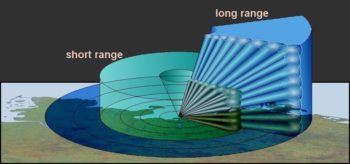 Older 3D radar device having a planar or linear phased array does not transmit simultaneously in all directions under observation. This is done sequentially in time. These antennas can only scan the space within a limited swivel angle. Here there are two possibilities: either the antenna is rotating in azimuth and electronically scans the elevation angle, or there are four planar antennas statically distributed around a carrier, each covering only of a quarter section of the hemisphere. Both variants allow an overall coverage around the radar site. Here, the radar transmits only in a certain direction and then waits for the echo signal from this direction.
Older 3D radar device having a planar or linear phased array does not transmit simultaneously in all directions under observation. This is done sequentially in time. These antennas can only scan the space within a limited swivel angle. Here there are two possibilities: either the antenna is rotating in azimuth and electronically scans the elevation angle, or there are four planar antennas statically distributed around a carrier, each covering only of a quarter section of the hemisphere. Both variants allow an overall coverage around the radar site. Here, the radar transmits only in a certain direction and then waits for the echo signal from this direction.
The rotating antenna has a critical disadvantage. Because each elevation angle will be scanned sequentially in time, the antenna mustn’t rotate too fast, to avoid gaps in the reconnaissance by the limited time budget. However, the version using the static antennas has the advantage in time scheduling that virtually four radars scan the space simultaneously. These four radar front-ends are subject of a common radar data processing and display. Here, the radar system can operate much more flexible and it can be used as multi-function radar. Modern radars are therefore always multi-function radars.
Since the use of the advantages of digital beamforming and the possible parallel digital processing of all receiving channels, this timing problem is completely overcome. However, the entire scanned area must then be illuminated with the pulse power during the transmission time, as like in MPR at that time. With a single, very specific “Crow’s-Nest Antenna”, patented by the Fraunhofer Institute for High-Frequency Physics and Radar Techniques (FHR), the entire hemisphere around the radar site could be controlled simultaneously.
Time is sometimes defined as the fourth dimension. Applied to the target coordinates of radar (Direction Determination, elevation angle and slant range) this would be the Doppler frequency. However, the Doppler frequency is also measured by classic 2D radars without them mutating into a 3D radar.
Types of 3D Radar Techniques

3D Pencil Beam Technique - The 3D Radar is a “pencil beam” radar. This “pencil-type” high-gain beam is aimed with phase control to several transmit/receive pointing elevations whilst the antenna is mechanically rotated in azimuth. Each beam can be configured with the number of pulses, pulse energy, instrumented range and processing type that are most appropriate, taking into account the required instrumented coverage and the characteristics of clutter in the elevation volume covered by the beam.
Detection is improved since it can only be affected by the clutter or interference present in the beam that points at the aircraft. High elevation beams are virtually free of surface clutter making aircraft detection more feasible than with conventional 2D radars. 3D radar system provides aircraft altitude data without the need of their cooperation.
Planar Array Antenna and Distributed - Solid-State Design: It is based on a planar array antenna composed of vertically stacked horizontal linear arrays. Driven by modular solid-state transmitters and receivers that electronically synthesize a transmit/receive antenna pattern with narrow beam width, both in azimuth and elevation.
Monopulse Technique - Another specific feature of 3D Radar is the achievement of high accuracy and resolution of aircraft in 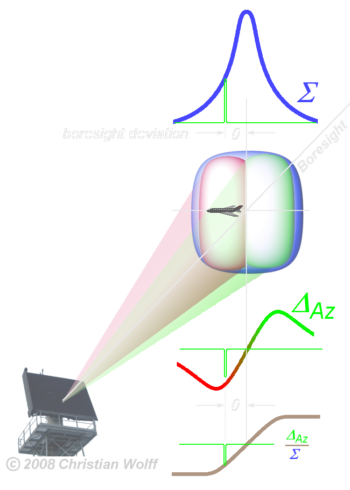 azimuth by the use of Monopulse technique. This technique, based on simultaneous reception of signals through two antenna patterns, sum-type and difference-type patterns, is also used for estimation of aircraft elevation, which is the first step for aircraft height calculation.
azimuth by the use of Monopulse technique. This technique, based on simultaneous reception of signals through two antenna patterns, sum-type and difference-type patterns, is also used for estimation of aircraft elevation, which is the first step for aircraft height calculation.
Range accuracy and resolution is obtained by digital pulse compression by using phase modulated waveforms and very low side lobe level filter response.
Frequency Diversity - The 3D Radar is a dual frequency radar simultaneously operating with two frequency channels. This feature provides better detection and accuracy performance, especially for small aircraft and interference conditions.
Anti-Clutter Capabilities - Detection of aircraft immersed in terrain or weather clutter is achieved by the use of MTD or MTI processing. Aircraft with low radial velocities can also be detected by the clutter-free high elevation beams or by the low elevation beams which provide superclutter visibility based on Clutter Map detection techniques.
FUTURE TRENDS OF 3D RADAR
The 3D radar market is estimated to grow to USD 1,775.0 Million by 2022, at a CAGR of 20.36% from 2019 to 2022.
 Near-area detection with state-of-the-art technology - The German company InnoSenT has developed a new radar solution for close range. The product iSYS-5005 impresses with reliable and precise detection thanks to complex 24 GHz MIMO radar technology and advanced signal processing. The product boasts new features, such as radar tracking, and determines comprehensive object information. The equipment of the near-range sensor is available for security systems & automatic door control for the first time.
Near-area detection with state-of-the-art technology - The German company InnoSenT has developed a new radar solution for close range. The product iSYS-5005 impresses with reliable and precise detection thanks to complex 24 GHz MIMO radar technology and advanced signal processing. The product boasts new features, such as radar tracking, and determines comprehensive object information. The equipment of the near-range sensor is available for security systems & automatic door control for the first time.
- Highly Adaptable Multiple Mission Radars - Northrop Grumman Corporation has demonstrated its mobile Highly Adaptable
 Multi-Mission Radar (HAMMR) system against a target drone to the US Army at Eglin Air Force Base, Florida.The HAMMR is a short- to medium-range X-Band Three Dimensional (3D) radar that utilizes the proven Active Electronically Scanned Array (AESA) AN/APG-83 F-16 fighter radar in a ground-based, sense on-the-move role. HAMMR provides multi-mission 3D performance for air surveillance, weapon cueing and counter-fire target acquisition missions in either a 360-degree or sector-only staring mode. HAMMR delivers the ability to provide force protection while operating on the move, increasing warfighter survivability.
Multi-Mission Radar (HAMMR) system against a target drone to the US Army at Eglin Air Force Base, Florida.The HAMMR is a short- to medium-range X-Band Three Dimensional (3D) radar that utilizes the proven Active Electronically Scanned Array (AESA) AN/APG-83 F-16 fighter radar in a ground-based, sense on-the-move role. HAMMR provides multi-mission 3D performance for air surveillance, weapon cueing and counter-fire target acquisition missions in either a 360-degree or sector-only staring mode. HAMMR delivers the ability to provide force protection while operating on the move, increasing warfighter survivability.
 Three-Dimensional Expeditionary Long-Range Radar (3DELRR) system - The Integrated Defense Systems of RaytheonCo. has been awarded a $52,686,179 fixed-price-incentive-firm, engineering and manufacturing development (EMD) contract for a new long-range radar system, the Three-Dimensional Expeditionary Long-Range Radar (3DELRR) system. Under the contract, which is expected to be completed by the end of November 2020, Raytheon will supply three production representative units of the 3DELRR systems, with work to be performed at Andover, Mass.
Three-Dimensional Expeditionary Long-Range Radar (3DELRR) system - The Integrated Defense Systems of RaytheonCo. has been awarded a $52,686,179 fixed-price-incentive-firm, engineering and manufacturing development (EMD) contract for a new long-range radar system, the Three-Dimensional Expeditionary Long-Range Radar (3DELRR) system. Under the contract, which is expected to be completed by the end of November 2020, Raytheon will supply three production representative units of the 3DELRR systems, with work to be performed at Andover, Mass.
 Long Tactical Range Radar - The British Royal Air Force (RAF) is set to receive a deployable military radar system, the Long Tactical Range 25 (LTR25), from Spanish firm Indra. Indra was chosen from a list of potential suppliers. Delivery of the advanced long-range air defence deployable radar system is anticipated to take place by the end of this year. The LTR25 deployable military radar system, which is part of the family of Lanza 3D radars developed by Indra, is known for its long-range detection capabilities, rapid deployment and ease of transportation. The radar can be transported in aircraft such as the Lockheed C-130 Hercules. The RAF can use the system for deployments outside the national territory to bolster the surveillance of a specific area on a ‘one-off basis’. In addition, LTR25 can serve as a backup in case one of the fixed radars is attacked or damaged.
Long Tactical Range Radar - The British Royal Air Force (RAF) is set to receive a deployable military radar system, the Long Tactical Range 25 (LTR25), from Spanish firm Indra. Indra was chosen from a list of potential suppliers. Delivery of the advanced long-range air defence deployable radar system is anticipated to take place by the end of this year. The LTR25 deployable military radar system, which is part of the family of Lanza 3D radars developed by Indra, is known for its long-range detection capabilities, rapid deployment and ease of transportation. The radar can be transported in aircraft such as the Lockheed C-130 Hercules. The RAF can use the system for deployments outside the national territory to bolster the surveillance of a specific area on a ‘one-off basis’. In addition, LTR25 can serve as a backup in case one of the fixed radars is attacked or damaged.
 Weather Radars - Maxstorm: Whether on-air or across digital platforms, Max Storm is designed to empower your team with the stunning visualizations, accurate weather data and streamlined workflows crucial to severe weather coverage. Take viewers into the storm in near real-time with 3D weather radar and imagery, or engage your audience on mobile devices while also promoting your live on-air broadcast. With Max Storm, the possibilities are endless.
Weather Radars - Maxstorm: Whether on-air or across digital platforms, Max Storm is designed to empower your team with the stunning visualizations, accurate weather data and streamlined workflows crucial to severe weather coverage. Take viewers into the storm in near real-time with 3D weather radar and imagery, or engage your audience on mobile devices while also promoting your live on-air broadcast. With Max Storm, the possibilities are endless.
 Autonomous Track and Search Radars - SMART-L is a 3D multibeam radar manufactured by Thales Group to provide long-range air & surface surveillance and target designation. A fully digitally controlled Active Electronically Scanned Array (AESA) radar. The applied high-end techniques result in a radar with an unrivalled long range performance of 2000 km. Within this enormous range it detects a wide spectrum of targets: air breathing targets, stealth targets and ballistic missiles. It can be installed on landbased locations, on sea and is also available as Deployable Air Defence Radar. SMART-L MM independently finds Ballistic Missile type targets. Following fast track initiation, the ballistic target track is maintained up to zenith. Ballistic Missile detection range is improved significantly by applying forward/backward scanning and staring modes which provides increased observation time.
Autonomous Track and Search Radars - SMART-L is a 3D multibeam radar manufactured by Thales Group to provide long-range air & surface surveillance and target designation. A fully digitally controlled Active Electronically Scanned Array (AESA) radar. The applied high-end techniques result in a radar with an unrivalled long range performance of 2000 km. Within this enormous range it detects a wide spectrum of targets: air breathing targets, stealth targets and ballistic missiles. It can be installed on landbased locations, on sea and is also available as Deployable Air Defence Radar. SMART-L MM independently finds Ballistic Missile type targets. Following fast track initiation, the ballistic target track is maintained up to zenith. Ballistic Missile detection range is improved significantly by applying forward/backward scanning and staring modes which provides increased observation time.







 Near-area detection with state-of-the-art technology - The German company InnoSenT has developed a new radar solution for close range. The product iSYS-5005 impresses with reliable and precise detection thanks to complex 24 GHz MIMO radar technology and advanced signal processing. The product boasts new features, such as radar tracking, and determines comprehensive object information. The equipment of the near-range sensor is available for security systems & automatic door control for the first time.
Near-area detection with state-of-the-art technology - The German company InnoSenT has developed a new radar solution for close range. The product iSYS-5005 impresses with reliable and precise detection thanks to complex 24 GHz MIMO radar technology and advanced signal processing. The product boasts new features, such as radar tracking, and determines comprehensive object information. The equipment of the near-range sensor is available for security systems & automatic door control for the first time. Multi-Mission Radar (HAMMR) system against a target drone to the US Army at Eglin Air Force Base, Florida.The HAMMR is a short- to medium-range X-Band Three Dimensional (3D) radar that utilizes the proven Active Electronically Scanned Array (AESA) AN/APG-83 F-16 fighter radar in a ground-based, sense on-the-move role. HAMMR provides multi-mission 3D performance for air surveillance, weapon cueing and counter-fire target acquisition missions in either a 360-degree or sector-only staring mode. HAMMR delivers the ability to provide force protection while operating on the move, increasing warfighter survivability.
Multi-Mission Radar (HAMMR) system against a target drone to the US Army at Eglin Air Force Base, Florida.The HAMMR is a short- to medium-range X-Band Three Dimensional (3D) radar that utilizes the proven Active Electronically Scanned Array (AESA) AN/APG-83 F-16 fighter radar in a ground-based, sense on-the-move role. HAMMR provides multi-mission 3D performance for air surveillance, weapon cueing and counter-fire target acquisition missions in either a 360-degree or sector-only staring mode. HAMMR delivers the ability to provide force protection while operating on the move, increasing warfighter survivability.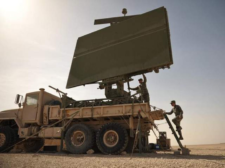
 Long Tactical Range Radar - The British Royal Air Force (RAF) is set to receive a deployable military radar system, the Long Tactical Range 25 (LTR25), from Spanish firm Indra. Indra was chosen from a list of potential suppliers. Delivery of the advanced long-range air defence deployable radar system is anticipated to take place by the end of this year. The LTR25 deployable military radar system, which is part of the family of Lanza 3D radars developed by Indra, is known for its long-range detection capabilities, rapid deployment and ease of transportation. The radar can be transported in aircraft such as the Lockheed C-130 Hercules. The RAF can use the system for deployments outside the national territory to bolster the surveillance of a specific area on a ‘one-off basis’.
Long Tactical Range Radar - The British Royal Air Force (RAF) is set to receive a deployable military radar system, the Long Tactical Range 25 (LTR25), from Spanish firm Indra. Indra was chosen from a list of potential suppliers. Delivery of the advanced long-range air defence deployable radar system is anticipated to take place by the end of this year. The LTR25 deployable military radar system, which is part of the family of Lanza 3D radars developed by Indra, is known for its long-range detection capabilities, rapid deployment and ease of transportation. The radar can be transported in aircraft such as the Lockheed C-130 Hercules. The RAF can use the system for deployments outside the national territory to bolster the surveillance of a specific area on a ‘one-off basis’. 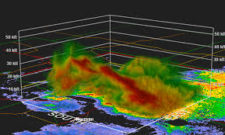 Weather Radars - Maxstorm: Whether on-air or across digital platforms, Max Storm is designed to empower your team with the stunning visualizations, accurate weather data and streamlined workflows crucial to severe weather coverage. Take viewers into the storm in near real-time with 3D weather radar and imagery, or engage your audience on mobile devices while also promoting your live on-air broadcast. With Max Storm, the possibilities are endless.
Weather Radars - Maxstorm: Whether on-air or across digital platforms, Max Storm is designed to empower your team with the stunning visualizations, accurate weather data and streamlined workflows crucial to severe weather coverage. Take viewers into the storm in near real-time with 3D weather radar and imagery, or engage your audience on mobile devices while also promoting your live on-air broadcast. With Max Storm, the possibilities are endless.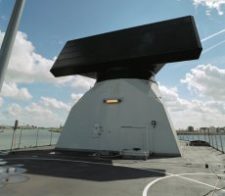 Autonomous Track and Search Radars - SMART-L is a 3D multibeam radar manufactured by Thales Group to provide long-range air & surface surveillance and target designation. A fully digitally controlled Active Electronically Scanned Array (AESA) radar. The applied high-end techniques result in a radar with an unrivalled long range performance of 2000 km. Within this enormous range it detects a wide spectrum of targets: air breathing targets, stealth targets and ballistic missiles. It can be installed on landbased locations, on sea and is also available as Deployable Air Defence Radar. SMART-L MM independently finds Ballistic Missile type targets. Following fast track initiation, the ballistic target track is maintained up to zenith. Ballistic Missile detection range is improved significantly by applying forward/backward scanning and staring modes which provides increased observation time.
Autonomous Track and Search Radars - SMART-L is a 3D multibeam radar manufactured by Thales Group to provide long-range air & surface surveillance and target designation. A fully digitally controlled Active Electronically Scanned Array (AESA) radar. The applied high-end techniques result in a radar with an unrivalled long range performance of 2000 km. Within this enormous range it detects a wide spectrum of targets: air breathing targets, stealth targets and ballistic missiles. It can be installed on landbased locations, on sea and is also available as Deployable Air Defence Radar. SMART-L MM independently finds Ballistic Missile type targets. Following fast track initiation, the ballistic target track is maintained up to zenith. Ballistic Missile detection range is improved significantly by applying forward/backward scanning and staring modes which provides increased observation time.
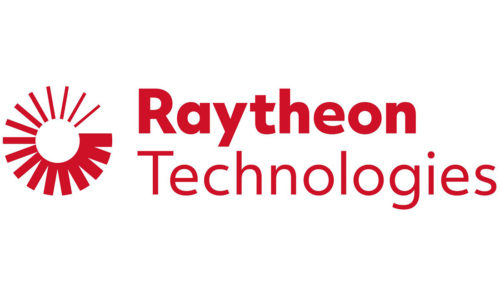









Leave a Reply